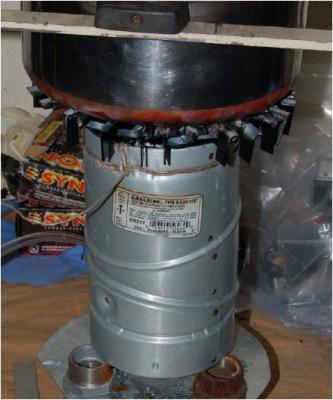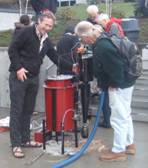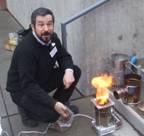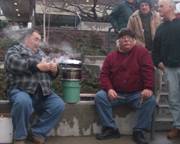Finned Pots as a Means of Increasing Efficiency Dale Andreatta, Ph.D., P.E., dandreatta@sealimited.com, February 13, 2009
Executive Summary A pot with heat transfer fins has much greater surface area than pots with no fins. In theory, this could lead to greatly increased heat transfer to the pot for a given stove, and the pot would theoretically improve the performance of the stove under all conditions. While we often concentrate on the stove as the primary element of a cooking system, the efficiency of a stove is mainly determined by the heat transfer to the pot, and designing a better pot would be an easy way to make a more efficient stove. A variety of types of finned pots were built and tested. The best designs were separated out in the lab, using natural gas to simulate a wood flame. Several types of fins can be retrofit to existing pots. The better designs of finned pots performed well over a range of conditions using simulated stoves, and sometimes also with an actual wood burning stove modified to use natural gas to simulate a wood flame. With fins on or near the bottom of the pot the finned pots typically gave around a 1.76-fold improvement in heat transfer. If the fins were on the sides of the pot a greater than 2-fold improvement was achieved. Tests on actual stoves using wood as the fuel generally gave smaller improvements in performance, generally 1.33 or less, corresponding to a 25% or smaller reduction in fuel usage. These tests were done under a variety of conditions with a variety of stoves, including the open fire (3-stone fire). On industrial fuel stoves using kerosene or alcohol, improvements were even less, with the finned pots giving 1.2 fold improvements or smaller. In some tests the finned pot used more fuel than an unfinned pot. The reasons for this wide range of results is not known. It is not recommended that finned pots be pursued as a means of increasing the efficiency of stoves. Better results can probably be achieved with less effort by using skirts around the pot. These skirts could be attached to the pots with optimum dimensions. See attached report presented to ETHOS 2009





